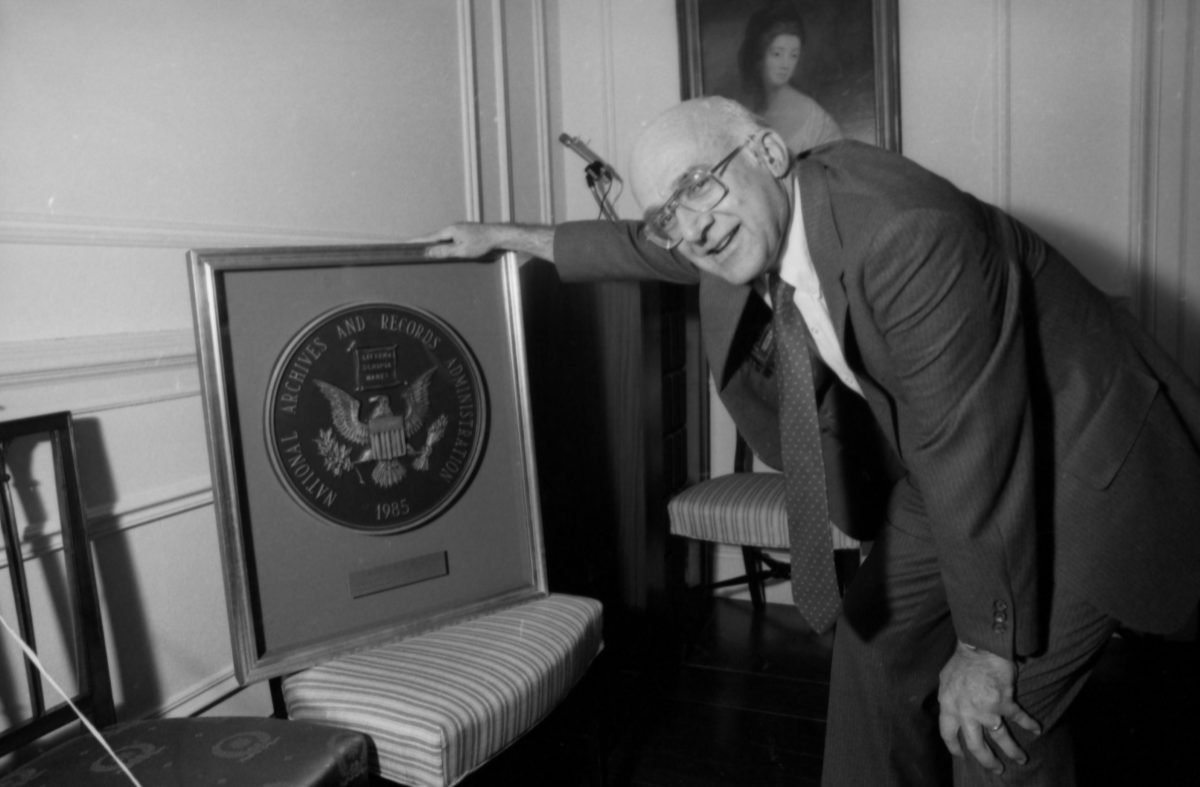On April 1, 2025, the National Archives and Records Administration (NARA) turns 40. Visit the National Archives History Office website for more information on the history of our agency.
President Franklin D. Roosevelt signed legislation establishing the National Archives on June 19, 1934. For its first 15 years, the National Archives operated as an independent agency with the Archivist of the United States being appointed by the President.


Then, in the late 1940s, the Commission on Organization of the Executive Branch of the Government, known as the Hoover Commission because former President Herbert C. Hoover chaired it, began to study changes to government to promote efficiency. When the commission set out, they hadn’t planned on addressing the issue of records management. However, Assistant Archivist of the United States Wayne Grover recommended that it looked into the issue, hoping to bring more attention to records in federal custody.
This backfired and on June 30, 1949, Congress passed legislation moving the National Archives into the newly created General Services Administration (GSA) and renamed it the National Archives and Records Service (NARS). Moving forward, the Administrator of the GSA appointed the Archivist of the United States, not the President.


From the National Archives’ perspective, it and the GSA did not have compatible missions—the National Archives stored and preserved federal government records of enduring value, and advocated for scholarly research of those records. The GSA was created to streamline the administrative functions of government, and manage public buildings and property.
From the very beginning, the historical and archival communities questioned the wisdom of placing our nation’s documentary heritage in the hands of those who are also, as Maryland Senator Charles Mathias put it, “the custodian of washrooms, storerooms, and workrooms.”
Throughout the GSA years, historical and archival communities made several calls for an independent National Archives, but the big push came in 1979. That year Admiral Rowland Freeman, Administrator of the GSA, directed the National Archives to come up with a plan to decentralize its holdings from Washington, DC, to the various regional archives around the country.

After intense criticism from the historical community, Freeman dropped the decentralization plan, but the fight over the issue, and other issues between the GSA and the National Archives, resulted in a push to have Congress pass legislation to separate NARS from the GSA.
At this same time, Robert Warner had became the sixth Archivist of the United States. Warner had made it his mission to gain independence for the National Archives. According to his book, Diary of a Dream, a group of six dedicated staff members met regularly to discuss their strategy in regards to Congress, the press, other allied agencies, and anyone else who might help get National Archives its independence.
In 1980 Senator Robert Morgan introduced the first bill to make the National Archives independent of the GSA. Although the Senate never acted on it, the Morgan Bill was an important step in the fight for independence.

Other pieces of legislation were introduced, but it was S. 905, which Senator Thomas Eagleton introduced in 1983, that garnered enough bipartisan support to move forward. In addition to organizations like the American Historical Association, the National Association of Government Archives and Records Administrators, the Coalition to Save Our Documentary Heritage, and the Society of American Archivists, groups of genealogists, educators, and other professionals also lobbied members of Congress and their staffs, educating them on the importance preserving and making government records available.
In early October of 1984, both the House and the Senate passed the bill and sent it to President Ronald Reagan on October 4 for his approval. Fifteen days later, on the advice of Edwin Meese, then counselor to the President, Reagan signed the bill into law effective April 1, 1985. The legislation reestablished the National Archives as an independent agency whose head was appointed by the President.


Warner led the National Archives through transition, including helping to determine which functions the GSA would continue to perform and which would now be under the purview of the new National Archives and Records Administration. He also assisted in restructuring the new NARA to once again function as an independent entity.

On April 1, 1985, Archivist Warner said, “Today is a great day for the National Archives. The proper preservation of the unique and accurate historical records of a nation is an issue of public policy which concerns every citizen. To operate effectively, the national record keeper of any country must have both independence and integrity. This new law will enable the National Archives of the United States to function with the organizational and administrative tools essential to its mission.”
NARA facilities around the country celebrated with staff photos on “Independence Day.”
Happy 40th to the National Archives and Records Administration!
















